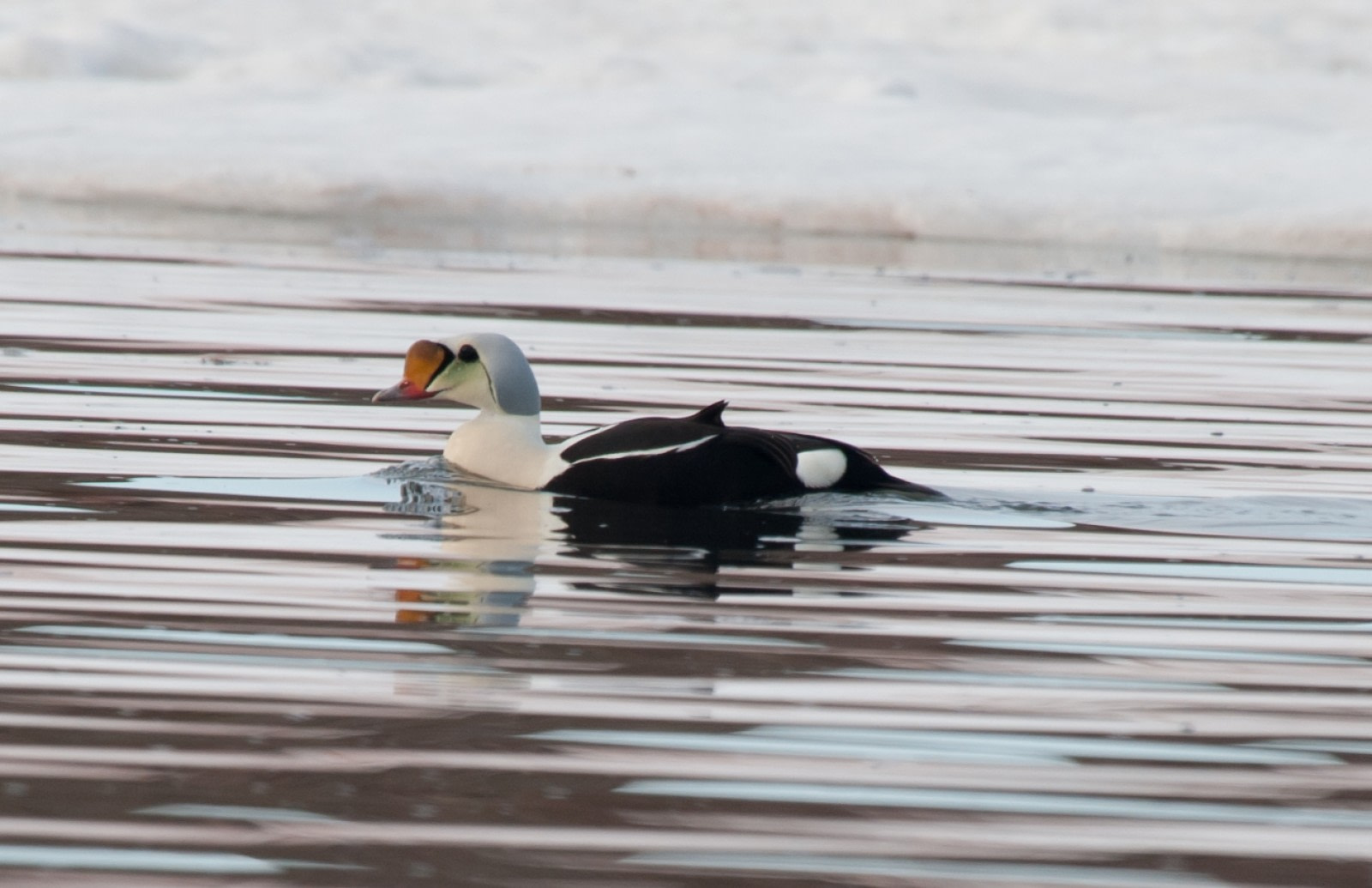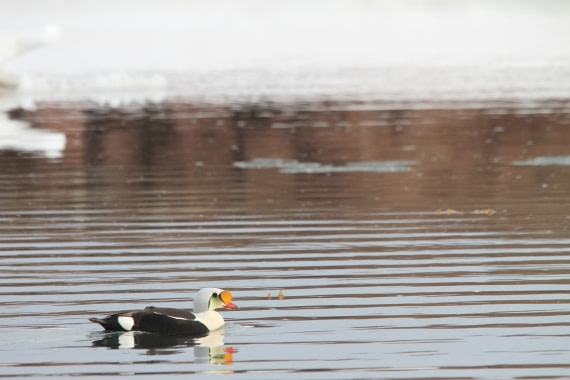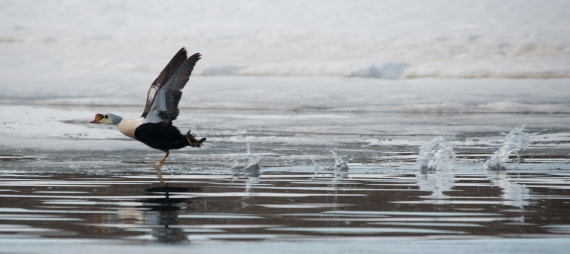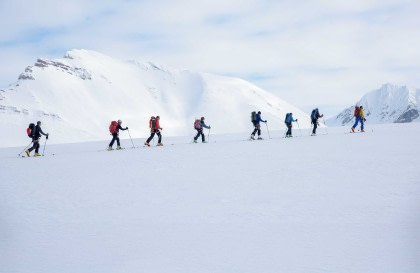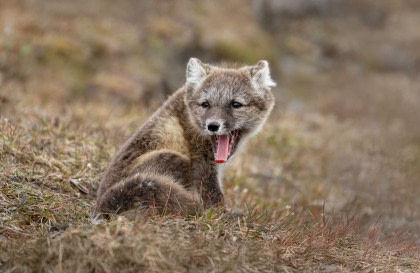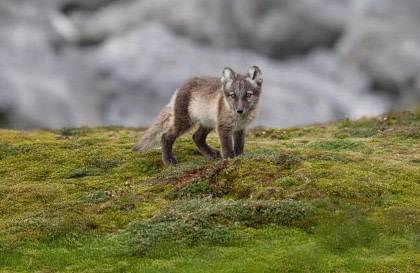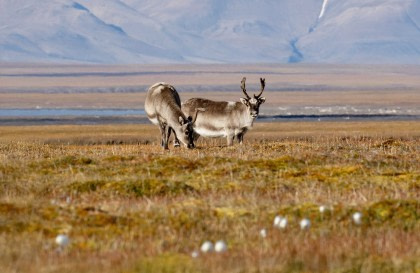Name: King Eider (Somateria spectabilis)
Length: 50 to 70 cm.
Weight: 1.5 kg.
Location: Asia, North America, Europe.
Conservation status: Least Concern.
Diet: Krill, squid, fish.
Appearance: Males – black body, white chest, blue head and neck, green cheek, red bill with a yellow “crown” on top. Females – brown with darker markings on flanks, light black bill.
How do King Eiders feed?
During the breeding season King Eiders tend to feed in fresh water, nabbing small invertebrates from the water’s surface. During the rest of the year they will spend more time on the ocean, diving to forage for invertebrates that are found closer to shallow bottom areas. They can dive for over 50 metres to reach the ocean floor.

Are King Eiders social?
King Eiders form flocks that can number up to 100,000.
How fast do King Eiders fly?
King Eiders can reach speeds of over 70 km per hour.
What are King Eider birthing rituals like?
King Eiders migrate to their breeding grounds in June and July. They construct a nest with down and grass spread throughout a scrape in the Arctic tundra ground.
4 to 7 eggs are laid. The female is the only one to incubate them for a period of 20 to 25 days. Once hatched the chicks are raised as a group by the females. The young fledge once they’re about 50 days old.
How long do King Eiders live?
King Eiders live about 15 to 20 years in the wild.
How many King Eiders are there today?
The worldwide King Eider population is estimated to be between 790,000 and 930,000 individuals.
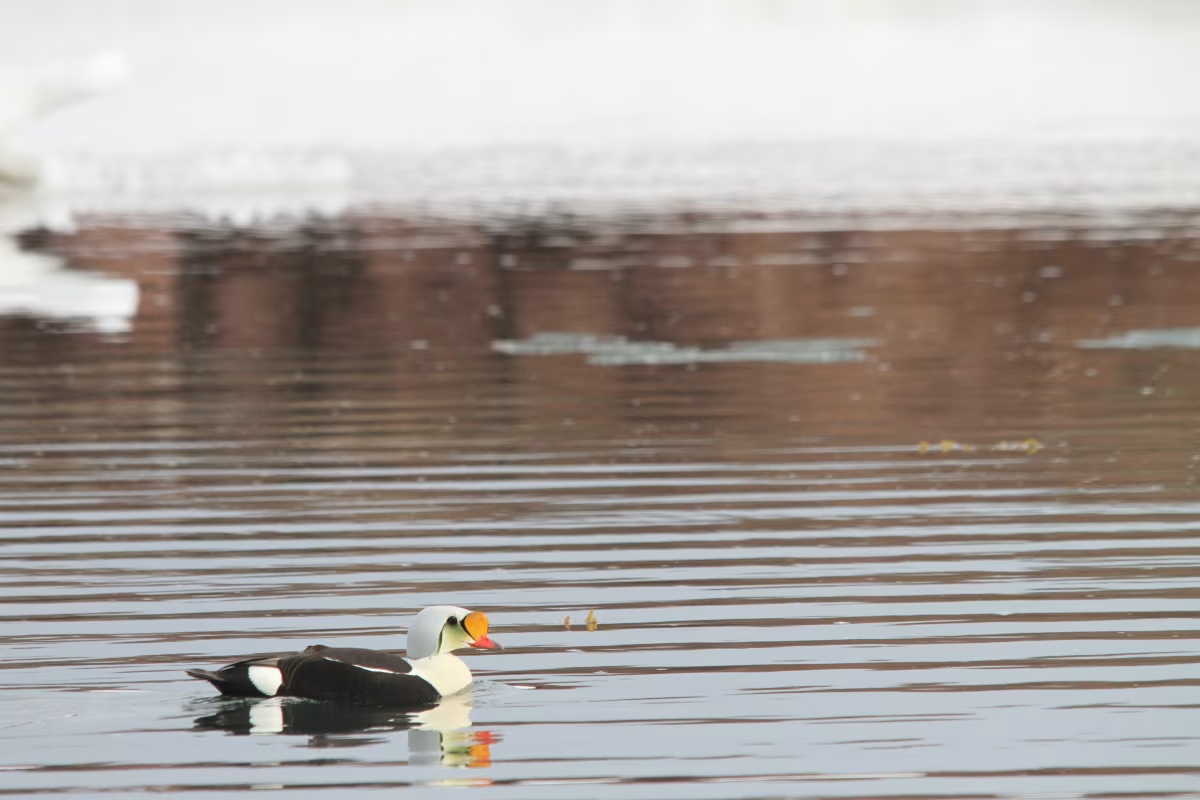
Do King Eiders have any natural predators?
King Eiders young and eggs are prey to Arctic Foxes, Ravens, Gulls, and Skuas (Jeagers).
7 Edifying King Eider Facts
1. King Eiders are known to cross-breed with Common Eiders.
2. The genus name Somateria comes from the Greek words sōma which means “body” and erion which means “wool.” This references the King Eider’s especially thick down.
3. Despite the fact that King Eiders have a very large worldwide range they have never developed any recognized subspecies.
4. Spectabilis is a Latin word that means “remarkable display” referring to the males’ colouring and plumage.
5. A King Eider’s weight can vary considerably depending on the season, ranging between 0.9 kg to as heavy as 2.2 kg.
6. King eiders are one of the largest sea ducks in the Northern Hemisphere.
7. Females rarely feed during the incubation period, resulting in a massive loss in weight.
